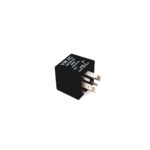Aftermarket intakes are popular upgrades for car enthusiasts seeking performance gains. However, a common concern is whether these modifications will void the vehicle’s warranty. This article explores the complexities of this issue and helps you understand the potential risks.
Magnusson-Moss Warranty Act and Aftermarket Parts
The Magnusson-Moss Warranty Act, enacted in 1975, protects consumers from having their warranties voided simply for using non-OEM parts. The Act prohibits manufacturers from requiring the use of specific brand parts for maintenance or repairs, unless they provide those parts free of charge. However, there’s a crucial caveat: if an aftermarket part is proven to have caused damage leading to a warranty claim, the manufacturer can deny coverage.
The Gray Area: Proving Causation
The challenge lies in establishing a direct link between the aftermarket intake and the component failure. While the Magnusson-Moss Act offers protection, manufacturers often have the resources to conduct thorough investigations and attribute damage to modifications. This creates a “gray area” where the determination becomes subjective and potentially biased. For instance, if an engine component fails, the manufacturer might argue the increased airflow from the intake caused undue stress, even if other factors contributed.
A mechanic inspects an engine for potential problems that could be linked to aftermarket parts.
The David vs. Goliath Scenario
Contesting a warranty denial often pits the individual car owner against a powerful manufacturer with vast legal and technical resources. Litigation can be costly and time-consuming, with no guarantee of success. While the Magnusson-Moss Act is on your side, proving your case requires substantial evidence and potentially expert testimony, which can be financially prohibitive. You’re essentially gambling on a jury’s understanding of complex technical issues.
Legal battles over warranty claims can be lengthy and expensive.
Weighing the Risks: Performance vs. Warranty
Ultimately, installing an aftermarket intake involves weighing the potential performance benefits against the risk of voiding your warranty. If you heavily rely on your warranty for peace of mind and financial protection, it might be prudent to avoid modifications that could jeopardize coverage.
Aftermarket intakes can enhance performance, but they also carry the risk of voiding warranties.
Mitigating the Risks
If you choose to install an aftermarket intake, consider these precautions:
- Consult with your dealer: Discuss the potential impact on your warranty before making any modifications.
- Choose reputable brands: Opt for high-quality intakes with proven track records and clear installation instructions.
- Keep documentation: Retain all receipts, installation instructions, and any communication with the dealer or manufacturer.
- Consider reversibility: Choose modifications that can be easily reversed to stock configuration if warranty issues arise.
Conclusion
While the Magnusson-Moss Warranty Act provides some protection, installing an aftermarket intake still carries the risk of voiding your warranty if a causal link to damage can be established. Carefully consider the potential consequences before modifying your vehicle and take steps to mitigate the risks. If you’re unsure, consulting with a legal professional specializing in automotive law can provide further guidance.

